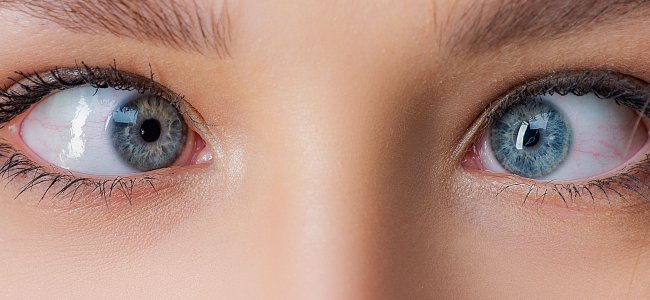Autism: a different functioning of the individual

How to recognize autism?
The editorial staff of Emianopsia.com has the pleasure of hosting Dr Beatrice Ferrari, a neuropsychomotor expert of the developmental age. Dr Ferrari and Dr Romano offers us a study on autism.
Autism: how is it defined?
It is a neurodevelopmental disorder that indicates a different functioning of the individual. It typically manifests itself in the first three years of life. The spectrum of autism includes different clinical conditions with similar functional characteristics.
The criteria for diagnosis (according to DSM-5)
According to DSM-5 (Diagnostic and Statistical Manual of Mental Disorders), the following criteria must be present in order to diagnose a patient with autism spectrum disorder:
Persistent deficits in social communication and social interaction in a variety of settings, not due to general developmental delays
- Deficit in socio-emotional reciprocity may range from atypical social approaches and failures in a normal two-way conversation, to a reduction in the sharing of interests, emotions and affections, up to the total lack of initiative in mutual social interaction;
- a defect in non-verbal communication that involves behaviours that are fundamental for social interaction: it ranges from communication with poor integration of verbal and non-verbal aspects, to abnormalities in eye contact and body language, deficits in the understanding and use of non-verbal communication, up to the total absence of gestures and facial expressions;
- deficiency in developing and maintaining appropriate social relations during development (in addition to those with caregivers), which varies from the difficulty of modulating behaviour in different social contexts, or difficulty in sharing imaginative play and developing friendships, up to the (apparent) absence of interest in other people.
A restricted and repetitive pattern of behaviours, interests, or activities
- Speech, movement, echolalia, repetitive use of objects or idiosyncratic phrases;
- Excessive adherence to routine, ritualized behavioural patterns, either verbal or non-verbal, or excessive resistance to change, as insistent focus on the same paths or the same foods, repetitive questions, or showing extreme discomfort for small changes.
- highly narrow and fixed interests, atypical in intensity or focus, such as strong attachment or concern for unusual objects, extremely reduced or persistent interests;
- hyper- or hyposensitivity to sensory inputs or atypical interests for sensory aspects of the environment, such as apparent indifference to pain or cold, avoiding specific sounds or tactile aspects, excessive activity in smelling or touching objects, such as lights or rotating objects;
- symptoms must be present in childhood, but can only manifest themselves fully when social demands exceed limited abilities, or can be masked by strategies learned later in life;
- symptoms can cause significant impairment of functioning in social, work, or other important areas;
- alterations are not best explained by intellectual disability (intellectual development disorder) or global developmental retardation.
Epidemiology
Autism does not have geographical and/or ethnic prevalence; however, it seems to affect males 3 to 4 times higher than females. Recent studies have shown an increase in cases compared to previous years. This situation appears to be due to several factors such as:
- greater definition of diagnostic criteria, including lighter forms;
- dissemination of standardised diagnostic procedures;
- greater awareness of operators and the general population;
- increase in services.2
What are the causes of autism?
As of this moment we do not know the exact causes that lead to this illness, but it seems to have a multifactorial origin. Studies suggest that some of these causes are determined by the set of genetic aspects, environmental factors, and biological variables.
At the base, however, there seems to be an alteration in the development of the central nervous system determined by the action of genetic and environmental factors either acting alone or together. Such factors can intervene at different times in the life of the child.
Prognosis
The prognosis (at any age) is conditioned by the type of intervention and the degree of cognitive functioning, which affects the different skills of the individual.
Recent scientific studies have shown the effectiveness of early interventions on the long-term outcome of symptomatology. In fact, in early childhood the child manifests greater capacity for the acquisition of new skills. In addition, early intervention allows parents to better understand the primary needs of the child and thus, be able to support them in their daily life.
Early intervention can aid in developing functional communication methods and providing useful strategies to give the child a good personal and social autonomy.
Specific tests
Autism Spectrum Disorder depends on behavioural parameters, so diagnosis is based on diverse sources of information. In addition to direct observations of the child’s spontaneous behaviour, specific scales of assessment are used for behaviour in different life contexts. Here are some of the most widely used diagnostic tools:
- ADOS-2 (Autism Diagnostic Observation Schedule-2nd Edition), based on direct and standardized observation of the child through the exploration of social behaviours in natural contexts.
- PEP-3 (Psycho-Educational Profile, Third Edition) allows you to derive specific indications to draw up a detailed development profile and plan a specific and individualized intervention program.
- CARS (Childhood Autism Rating Scale), a scale of assessment of autistic behaviours that allow to collect information in the various contexts of life and from multiple sources.
- ABC (Autism Behaviour Checklist), an evaluation scale of individual behaviours.
- VINELAND II (Vineland-Adaptive Behaviour Scales, Second Edition), a semi-structured interview that assesses the adaptive behaviours of the individual.
Intervention
A neurodevelopmental disorder requires, in the case of the autistic spectrum, specific interventions that consider:
- the design of early and intensive individualised pathways, if possible. Objectives must be defined based on the progress achieved in past sessions; therefore periodic checks must be carried out to observe the progress made and if any changes ought to occur;
- the importance of the quality-of-life construct based on: subjective dimension (that is what is important for the person), objective dimension, social, and cultural dimension;
- work in a team with professionals who interact with the child, including school workers;
- periodically meeting with parents.
Professionals who interact with autistic children must, in addition to having a theoretical basis, be able to make assessments, adapt the environment to the demands of the minor, and use specialized educational strategies.
It is important to consider that children diagnosed with autism tend to have visual thinking, follow visual or written indications more easily, adhere well to a routine, have a marked perceptive capacity and are very precise.
Recognized interventions
The guidelines for the treatment of disorders of the autistic spectrum 5 contain the scientifically approved interventions:
- Intervention programs mediated by parents can improve social communication and behavioural problem, help in the interaction favouring a general well-being of the whole family. These are interventions in which parents have received specific training (Parent training, PT).
- Intervention in support of social communication, determined by an adaptation of the surrounding environment promote a better quality of life. Such interventions must take into consideration individual characteristics of each person.
- TEACCH program promotes improvements in motor skills, cognitive performance, social functioning, and communication.
- Applied Behaviour Analysis (ABA) promotes the improvement of intellectual abilities, language, and adaptive behaviours. The purpose of behavioural interventions aims also to reduce the frequency and severity of a problem behaviours by providing strategies to the individual.
- Cognitive Behavioural Therapy (CBT) for the treatment of anxiety disorders in children with Asperger syndrome or high functioning autism. It is an intervention aimed at children and parents to promote anger management skills.
Drug treatments
Finally, there might be the need for psychopharmacological therapy, periodically monitored by the doctor. This type of intervention is used to deal with some critical issues that could manifest together with autism. It should be noted that there are no drugs with a specific validation for the treatment of autism spectrum disorders.
Before starting a drug treatment, it is always advised to check whether specific changes in everyday environments, habits, behavioural and educational interventions, can ameliorate unwanted symptoms, as well as improving the well-being of the individual.6.
Bibliography
- American Psychiatric Association (2013). Diagnostic and statistical manual of mental disorders-DSM-5. APA, Washington.
- SINPIA Linee guida per l’autismo: raccomandazioni tecniche-operative per i servizi di neuropsichiatria dell’età evolutiva.
- Cangialose A. e Allen. P.J. (2014), Screening for autism spectrum disorders in infants before 18 months of age, «Journal of Pediatric Nursing».
- SINPIA Linee guida per l’autismo: raccomandazioni tecniche-operative per i servizi di neuropsichiatria dell’età evolutiva.
- Linee Guida 21 (2011), “Il trattamento dei disturbi dello spettro autistico nei bambini e negli adolescenti”.
- Istituto superiore i sanità – Disturbi psichiatrici.

You are free to reproduce this article but you must cite: emianopsia.com, title and link.
You may not use the material for commercial purposes or modify the article to create derivative works.
Read the full Creative Commons license terms at this page.








